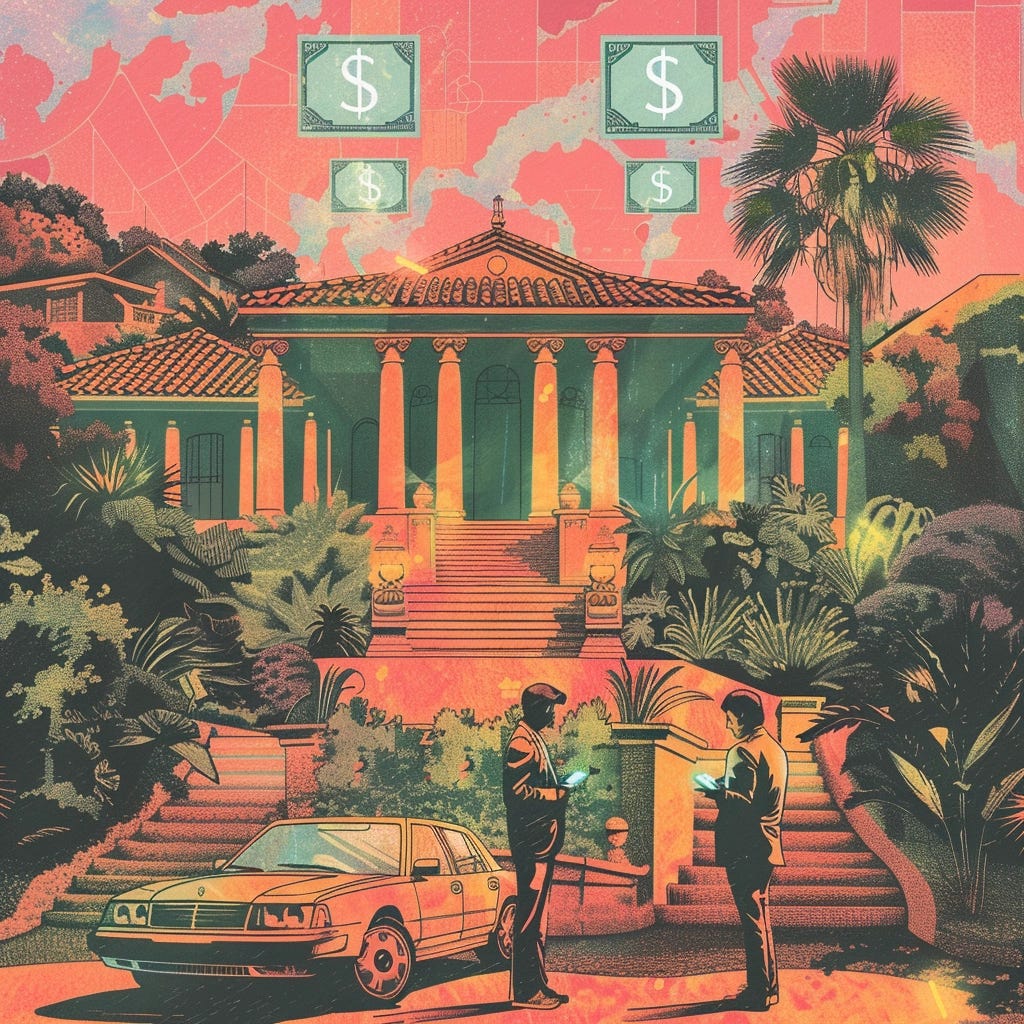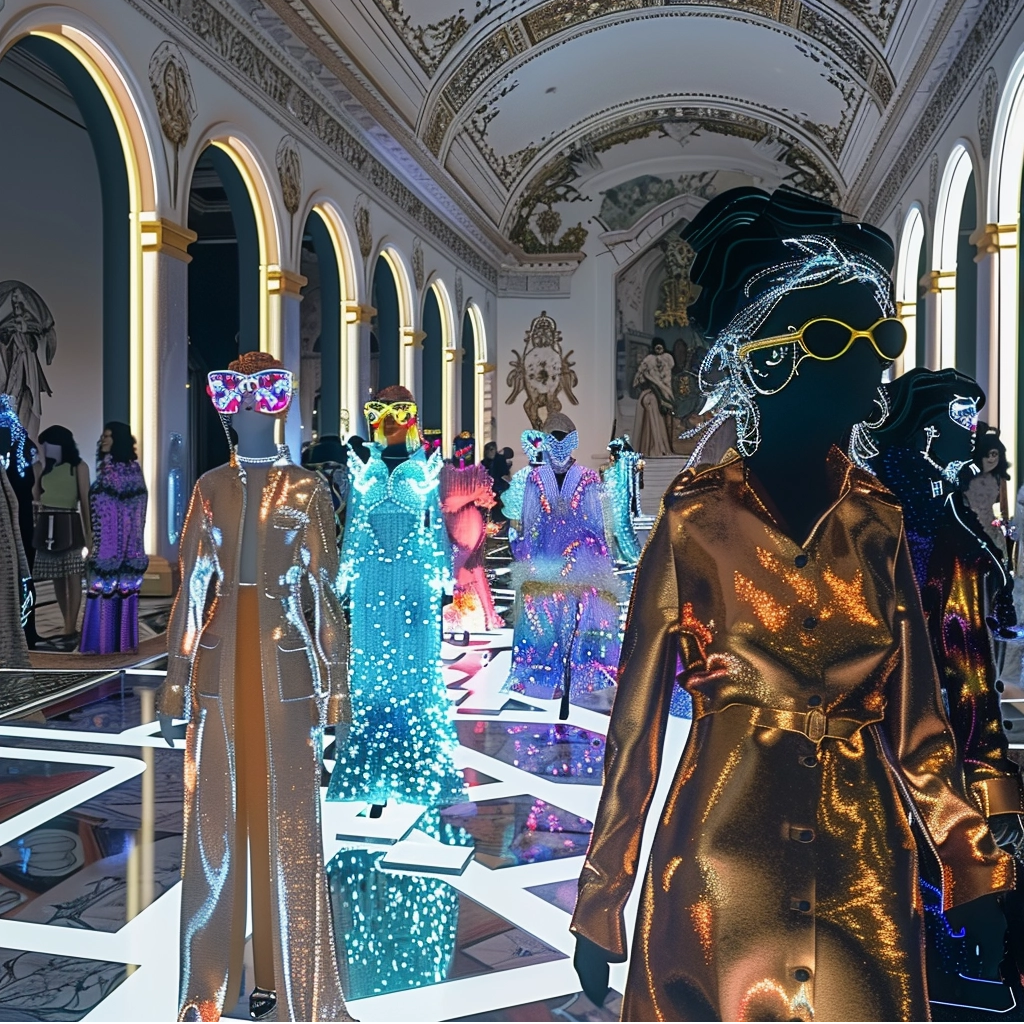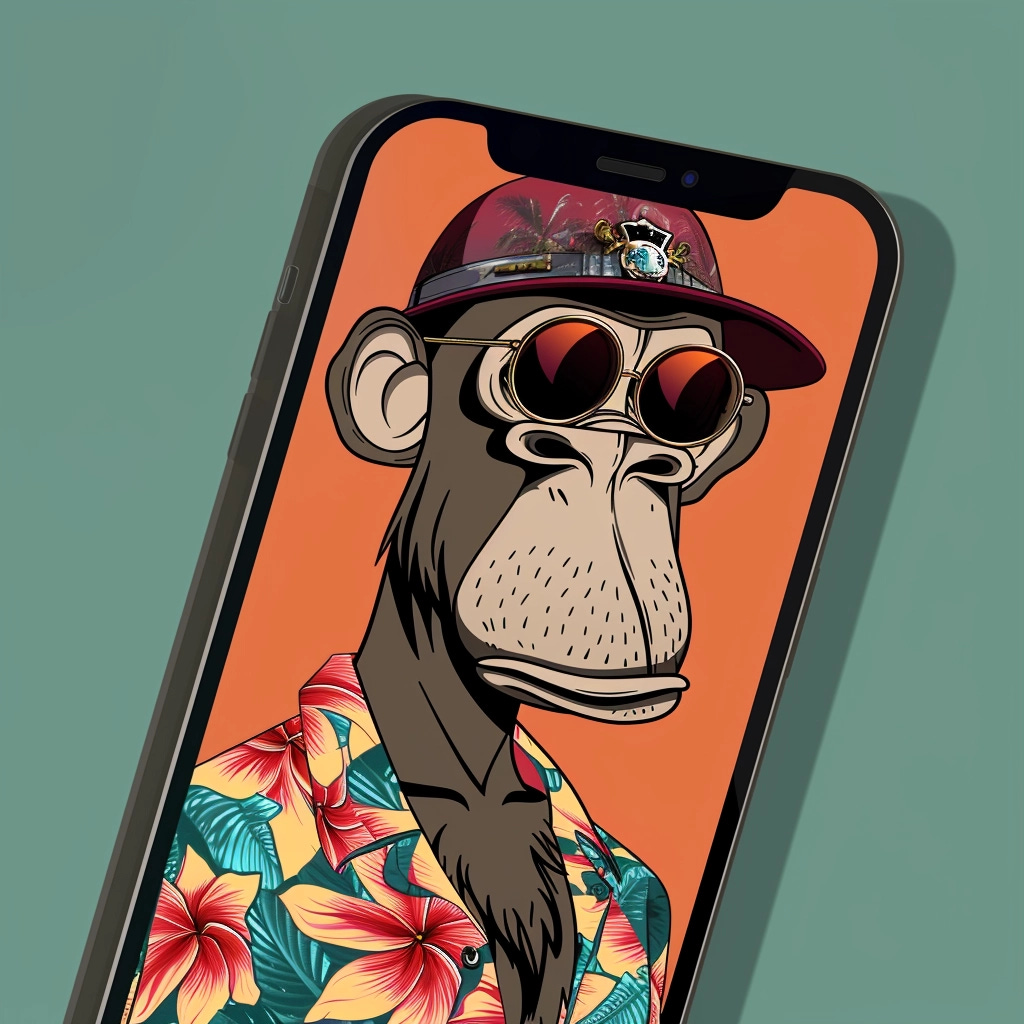Non-Fungible Tokens (NFTs) and the Evolution of Digital Ownership
Exploring the Impact of NFTs on Ownership, Creativity, and Sustainability in the Digital Age
NFTs are a hot topic in the digital world, and for a good reason. NFTs, or non-fungible tokens, are unique digital assets that represent ownership or proof of authenticity of a particular item or piece of content. Think of them as digital certificates of authenticity, but with a twist – they're stored on a secure and transparent digital ledger called the blockchain.
One of the key features of NFTs is their uniqueness. Each NFT is one-of-a-kind, or part of a limited edition, making them valuable through scarcity. This uniqueness is made possible by blockchain technology, which ensures that each NFT is verifiable and tamper-proof.
NFTs have a wide range of use cases, from digital art and collectibles to virtual real estate and in-game assets. They're bought, sold, and traded on various online platforms and marketplaces, thanks to their interoperability and standards that ensure compatibility across different platforms. While NFTs offer exciting opportunities for digital ownership and creativity, they also come with challenges, such as environmental concerns due to the energy-intensive nature of blockchain networks, as well as issues of copyright infringement, market speculation, or money laundering.
Despite these challenges, NFTs represent a fascinating intersection of technology, art, and ownership, with the potential to revolutionize how we think about digital assets and ownership in the digital age.

What are NFTs and why they are so unique?
Non-fungible tokens are unique digital assets that represent ownership or proof of authenticity of a particular item or piece of content. Unlike cryptocurrencies such as Bitcoin or Ethereum, which are fungible and can be exchanged on a one-to-one basis, NFTs are non-fungible, meaning each one is unique and cannot be exchanged on a like-for-like basis. The uniqueness of NFTs is one of their key characteristics. Each NFT has a distinct value and cannot be replicated or divided into smaller units. This uniqueness is made possible by blockchain technology, which ensures that each NFT is verifiable and tamper-proof.
Another characteristic of NFTs is their indivisibility. Unlike cryptocurrencies, which can be divided into smaller units, NFTs are whole and cannot be split into smaller parts. This means that each NFT represents a complete and unique digital asset.
NFTs are also transparent and secure. They are stored on a blockchain, which is a decentralized and transparent digital ledger. This ensures that ownership of an NFT is easily verifiable and cannot be altered or forged.
NFTs provide proof of ownership and authenticity for any given digital asset. They use blockchain technology to create a digital certificate of ownership that is secure, transparent, and tamper-proof, ensuring that the NFT is one-of-a-kind or part of a limited edition.
Finally NFTs are interoperable, which means that they can be bought, sold, and traded on various online marketplaces and platforms. For this purpose, they use standards like ERC-721 or ERC-1155 to ensure that they conform to certain specifications, making them easily recognizable and compatible across different platforms.
Overall, NFTs represent ownership or proof of authenticity of a particular item or piece of content. Their uniqueness, indivisibility, and transparency make them valuable for a wide range of use cases, from digital art and collectibles to virtual real estate and in-game assets. However, with a proper legal framework, they could easily become a digital representation of physical assets, such as land, house, car, art, or valuable objects, and thus traded more easily without the need for middle man. In the optimal scenario trade of physical assets via their digital NFT representation, when connected with any given fiscal and e-government system could automatically ensure that not only the assets are traded in a legally binding way, but also that the taxes are automatically collected, and administrative fees are paid.

How blockchain technology allows NFTs to perform its functions?
Imagine blockchain as a digital ledger that records transactions in a secure and transparent way. Let's say you create a piece of digital art and want to sell it as an NFT. You would mint (or create) an NFT on a blockchain platform, which essentially means creating a unique token that represents your artwork. This token is then recorded on the blockchain, along with information about the artwork and its ownership.
Once the NFT is created, it can be bought, sold, or traded on various online marketplaces. Each transaction involving the NFT is recorded on the blockchain, creating a transparent and tamper-proof record of ownership. This means that anyone can verify the ownership of an NFT by checking the blockchain. The security of blockchain comes from its decentralized nature. Instead of being stored on a single server, the blockchain is distributed across a network of computers. This makes it virtually impossible for anyone to alter the ownership records of an NFT without the consensus of the network.
Ensuring authenticity of physical assets
Now how can NFTs represent the value of physical assets? It is not that difficult. While the blockchain can verify ownership of the NFT, verifying the authenticity and value of the physical asset itself requires involvement of third-party institutions, which can provide certifications, appraisals, and record them on blockchain. Of course, as it comes to many assets classes, such companies recording the value on blockchain would need some regulatory oversight and proper legislation.
Already now there are several companies and platforms working on physical asset verification for NFTs. Verisart provides blockchain-based certification for artworks and collectibles, allowing artists and collectors to create tamper-proof certificates of authenticity, Chronicled provides platform for supply chain of pharmaceuticals and provenance tracking, while Vinsent uses blockchain technology to verify the authenticity of fine wines, allowing customers to track the provenance and history of each bottle.
As explained by Jacob Ner-David, founder of Vinsent:
“For the winery, we offer an easy to use digital platform and ongoing feature development, payment processing including credit card, crypto, and multi-currency, a user database of those who have bought wine, and the logistics of home delivery to consumer. For pre-orders, wineries receive the convenience of getting paid while wine is still in the barrel.
For the consumer, we provide attractive pricing, trusted provenance, as all pre-orders and bottled wine are registered to blockchain, and ongoing experience via exclusive content, including winemaking updates, “ask the winemaker,” and live streams”

Automating NFT transactions with smart contracts
Smart contracts are like digital agreements that automatically execute actions when certain conditions are met. In the world of NFTs, smart contracts play a crucial role in automating transactions and ensuring secure and immutable ownership transfers. Let's say you want to sell your NFT. You can use a smart contract to set up the terms of the sale, such as the price and the conditions for transfer of ownership. When a buyer purchases your NFT, the smart contract automatically transfers ownership rights to the buyer and releases the payment to you, all without the need for intermediaries.
The beauty of smart contracts is that they are executed on a blockchain, which means they are tamper-proof and transparent. Once a smart contract is deployed, it cannot be changed, ensuring that the terms of the transaction are enforced exactly as they were written.
In this way, smart contracts provide a secure and efficient way to automate transactions and ensure that ownership rights are transferred securely and immutably. They remove the need for trust between parties, as the terms of the transaction are enforced by code, not by a central authority. This makes NFT transactions more efficient, transparent, and secure, benefiting both buyers and sellers in the NFT market, and removing red tape and middle men from the equation.
Interoperability of NFTs
Interoperability is crucial in the world of NFTs, where digital assets need to be able to move seamlessly between different platforms and ecosystems. Standards like ERC-721 and ERC-1155 play a key role in ensuring this compatibility.
Imagine you have an NFT that you want to sell on different marketplaces. Without interoperability, you would have to create a separate version of your NFT for each platform, which would be cumbersome and inefficient. Standards like ERC-721 and ERC-1155 provide a common set of rules that NFTs can follow, ensuring that they can be easily recognized and traded across different platforms.
ERC-721 is the standard for non-fungible tokens, providing a blueprint for how NFTs should be created and managed on the Ethereum blockchain. It defines a set of rules and guidelines for creating and managing unique tokens. Each ERC-721 token is distinct and non-divisible, making it ideal for representing unique digital assets like art pieces or collectibles. ERC-1155, on the other hand, is a newer standard that allows for the creation of both fungible and non-fungible tokens within the same contract. This makes it more efficient to create and manage NFTs, as you can use the same contract for different types of tokens.
By adhering to these standards, NFT creators and platforms can ensure that their tokens are compatible with a wide range of wallets, marketplaces, and other NFT-related services. This interoperability is essential for the growth and adoption of NFTs, as it allows for a more seamless and efficient ecosystem where digital assets can flow freely between different platforms and users.
NFTs use cases
Non-fungible tokens have evolved far beyond their origins in art and collectibles, finding innovative applications in a wide array of industries. One of the most exciting frontiers is virtual real estate, where NFTs are used to represent ownership of digital land, buildings, and other virtual assets within virtual worlds and metaverses. These virtual assets can be bought, sold, and developed, creating new opportunities for virtual real estate investment and development.
In the gaming industry, NFTs are revolutionizing the concept of in-game assets. Players can now truly own their in-game items, such as weapons, skins, and characters, and trade them with other players. This opens up new possibilities for gameplay, as players can monetize their gaming achievements and create unique gaming experiences.
NFTs are also making waves in the world of fashion and luxury goods. Brands are using NFTs to create digital fashion items and accessories that can be bought, sold, and worn in virtual environments. This digital fashion market allows for more sustainable and customizable fashion experiences, as well as new revenue streams for designers and brands.
Beyond these industries, NFTs are being used in music, sports, ticketing, and even education. Musicians are releasing NFTs as exclusive digital collectibles for their fans, sports teams are using NFTs to create digital memorabilia, event organizers are using NFTs for ticketing and access control, and educators are using NFTs to create and sell digital courses and certifications.
Overall, the potential use cases for NFTs are virtually limitless, as they offer a new way to represent ownership and authenticity in the digital world. Whether it's in virtual real estate, gaming, fashion, or beyond, NFTs are reshaping industries and creating new opportunities for creators, collectors, and consumers alike.

NFTs marketplaces
NFT marketplaces play a pivotal role in the vibrant ecosystem of non-fungible tokens, acting as digital hubs where creators, collectors, and enthusiasts can buy, sell, and trade these unique digital assets. These platforms provide a user-friendly interface that simplifies the process of minting NFTs, listing them for sale, and discovering new and exciting digital creations.
One of the key contributions of NFT marketplaces is their role in democratizing access to the NFT market. By providing a platform for creators to showcase their work and reach a global audience, these marketplaces have empowered artists, musicians, game developers, and other creators to monetize their digital creations in ways that were previously inaccessible.
Moreover, NFT marketplaces have played a significant role in fostering community and collaboration within the NFT ecosystem. These platforms often feature social features such as forums, chat rooms, and community events, where creators and collectors can connect, share ideas, and collaborate on new projects, bringing not only growth but also contributing to innovation and experimentation.

Key challenges associated with NFTs
NFTs have undoubtedly brought a wave of innovation, but they also come with challenges and considerations that need to be addressed. One significant concern is the environmental impact of NFTs, particularly due to the energy-intensive process of minting and trading on blockchain networks. This has raised questions about the sustainability of NFTs and their contribution to carbon emissions, mostly because these blockchains that are based on the proof-of-work (PoW) mechanism require significant amounts of energy to mint new tokens.
Copyright issues are another major concern in the NFT space. The ease with which digital content can be copied and shared has led to instances of unauthorized use and infringement, raising questions about the ownership and authenticity of NFTs, as well as the legal framework for protecting intellectual property rights in the digital age.
Fraud and money laundering are also risks associated with NFTs. The pseudonymous nature of blockchain transactions can make it challenging to trace the origin of funds or verify the identity of buyers and sellers, unless they want to cash out. This creates opportunities for fraudsters to use NFTs for illicit activities, such as money laundering or selling stolen digital assets.
Tax collection is another consideration in the NFT space. The decentralized nature of blockchain transactions can make it difficult for tax authorities to track and collect taxes on NFT transactions. This raises questions about the enforcement of tax laws in the digital economy and the need for greater transparency and compliance.
Aside for the aforementioned, NFTs are already challenging legal frameworks globally, due to their ability to evade sanctions in transferring value, challenges associate with fulfilling the KYC and AML/CFT regulations, as well as using NFTs as collateral.
Future trends
The future of the NFT space holds a wealth of exciting possibilities, with several key trends and developments on the horizon. One major trend is increased interoperability between different NFT platforms and blockchains. This will allow for seamless transfer and trading of NFTs across ecosystems, opening up new opportunities for creators and collectors and driving further innovation in the NFT space.
Scalability is another key challenge facing many blockchain networks used for NFTs. We can expect to see advancements in blockchain technology that address scalability issues, allowing for faster and more efficient transactions.
As the NFT market continues to grow, we can also expect to see increased regulatory scrutiny. Governments and regulatory bodies around the world are likely to develop and implement regulations specific to NFTs, addressing issues such as copyright, fraud, and consumer protection, and even soon tax obligations.
Furthermore, NFTs are increasingly being used to represent ownership of physical assets. We can expect to see further integration between NFTs and the physical world, with NFTs being used to represent real estate, luxury goods, and other physical assets.
Finally, as NFT technology evolves, we can expect to see new and innovative use cases emerge. This could include NFTs being used in industries such as healthcare, education, and supply chain management, opening up new opportunities for digital ownership and authenticity.
Enjoying Tech Blueprint?
Don't miss out on future posts – subscribe for free and stay updated with the latest in technology, policy, and economy.
Your support means the world to me! If you found this post valuable, please consider sharing it with your network. Together, we can explore the exciting intersection of tech and the world around us.




